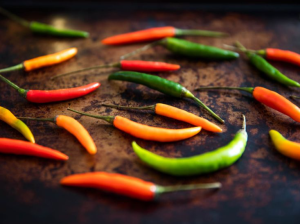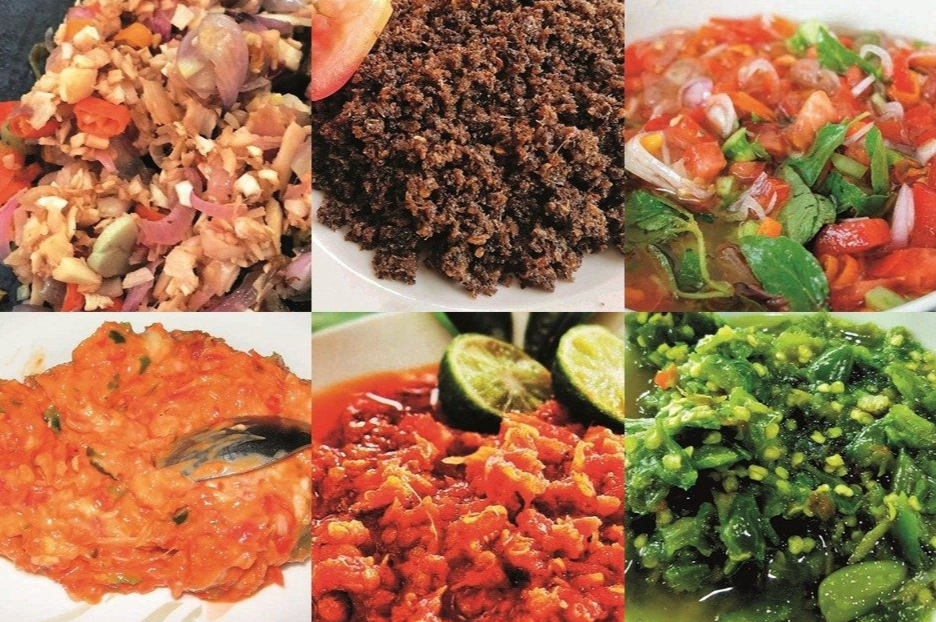Introduction:
Chili peppers are an integral part of Indonesian cuisine, adding depth, flavor, and, most notably, heat to a wide array of dishes. From sambal to rendang, Indonesian chili plays a central role in defining the country’s culinary identity. In this article, we embark on a journey to explore the fiery heat of Indonesian chili, delving into its varieties, cultural significance, and culinary impact.
Varieties of Indonesian Chili:
Indonesia boasts a diverse range of chili pepper varieties, each with its own unique flavor profile and heat level. Some of the most commonly used varieties include:
- Cabai Merah (Red Chili): These are the most ubiquitous chili peppers in Indonesian cuisine, known for their vibrant red color and moderate to high heat level. They are often used in sambal, curries, and stir-fries.
- Cabai Rawit (Bird’s Eye Chili): These small, slender chili peppers pack a punch, delivering intense heat with a slightly fruity flavor. They are frequently used to add spiciness to sambal and other condiments.
- Cabai Hijau (Green Chili): Green chili peppers are milder in heat compared to their red counterparts and are often used in dishes such as sayur lodeh (vegetable curry) and pecel (peanut sauce).
- Cabe Gendot (Kampot Pepper): Native to West Java, these tiny, round chili peppers are prized for their intense heat and aromatic flavor. They are commonly used in local specialties like sambal terasi (shrimp paste chili sauce).
Cultural Significance:
Chili peppers have a long history in Indonesian culinary traditions and are deeply ingrained in the country’s cultural fabric. They are not only valued for their flavor and heat but also for their medicinal properties and symbolic significance. Chili peppers are believed to stimulate the appetite, aid digestion, and provide a sense of warmth and vitality, particularly in cooler climates.
Culinary Impact:
Indonesian chili peppers play a transformative role in the country’s cuisine, elevating dishes with their fiery heat and nuanced flavor profiles. Sambal, a spicy chili sauce made from fresh chili peppers, is a staple condiment in Indonesian cuisine and accompanies virtually every meal. Chili peppers are also used in a variety of other dishes, including soups, stews, stir-fries, and marinades, adding depth, complexity, and heat to the culinary repertoire.

Health Benefits:
In addition to their culinary uses, Indonesian chili peppers offer several health benefits. They are rich in vitamins, minerals, and antioxidants, including vitamin C, vitamin A, and capsaicin—a compound responsible for the peppers’ heat and numerous health-promoting properties. Capsaicin is believed to have anti-inflammatory, analgesic, and metabolism-boosting effects, making chili peppers a valuable addition to a balanced diet.
Indonesian chili peppers are more than just a culinary ingredient—they are a cultural icon, a source of culinary inspiration, and a symbol of vitality and warmth. Whether used to add fiery heat to sambal or lend depth of flavor to curries and stews, chili peppers play an indispensable role in Indonesian cuisine, enriching dishes with their distinctive flavor and heat. As Indonesians continue to celebrate their rich culinary heritage, the fiery heat of chili peppers will undoubtedly remain a cherished and essential element of the country’s gastronomic identity.
Exploring the Pros and Cons of Indonesian Chili
Chili peppers, or “cabai” in Indonesian, are a quintessential ingredient in Indonesian cuisine, known for their fiery heat and flavor-enhancing properties. While Indonesian chili peppers add depth and spice to a wide range of dishes, they also come with both partaitogel advantages and disadvantages. In this article, we’ll delve into the strengths and weaknesses of Indonesian chili, examining its culinary benefits and potential drawbacks.

Advantages of Indonesian Chili:
- Flavor Enhancement: Indonesian chili peppers are prized for their ability to enhance the flavor of dishes, adding depth, complexity, and a hint of heat. From sambal to soups, chili peppers infuse Indonesian cuisine with a distinctive and memorable taste that keeps diners coming back for more.
- Cultural Significance: Chili peppers hold cultural significance in Indonesian society, symbolizing vitality, warmth, and hospitality. They are an integral part of traditional recipes and culinary rituals, embodying the rich culinary heritage and cultural diversity of the archipelago.
- Health Benefits: Chili peppers contain capsaicin, a compound that not only gives them their characteristic heat but also offers numerous health benefits. Capsaicin is believed to have anti-inflammatory, antioxidant, and metabolism-boosting properties, making chili peppers a valuable addition to a healthy diet when consumed in moderation.
- Versatility: Indonesian chili peppers are incredibly versatile and can be used in a wide variety of dishes, ranging from sambal and curries to soups, stir-fries, and marinades. Their adaptability allows cooks to experiment with different flavors and spice levels, creating dishes that cater to individual preferences.
Disadvantages of Indonesian Chili:
- Digestive Discomfort: For some individuals, consuming spicy foods containing Indonesian chili peppers may lead to digestive discomfort, including heartburn, acid reflux, and gastrointestinal upset. Excessive consumption of chili peppers can irritate the digestive tract and exacerbate existing digestive issues.
- Heat Intensity: Indonesian chili peppers are known for their intense heat, which can be overwhelming for individuals with a low tolerance for spicy foods. While some enjoy the fiery kick of chili peppers, others may find it too overpowering and prefer milder alternatives.
- Cultural Dependency: The widespread use of chili peppers in Indonesian cuisine may lead to a cultural dependency on spicy flavors, overshadowing the nuances of other ingredients and culinary techniques. Overreliance on chili peppers can limit culinary creativity and diversity, hindering the exploration of alternative flavor profiles.
- Environmental Impact: The cultivation of chili peppers in Indonesia may have environmental implications, including deforestation, habitat destruction, and pesticide use. Unsustainable farming practices can contribute to soil degradation, biodiversity loss, and environmental degradation in chili-producing regions.
Conclusion:
In conclusion, Indonesian chili peppers offer a myriad of culinary benefits, from flavor enhancement to cultural significance and potential health benefits. However, they also come with certain drawbacks, including digestive discomfort, heat intensity, cultural dependency, and environmental impact. By balancing the advantages and disadvantages of Indonesian chili peppers and incorporating them mindfully into a diverse and balanced diet, individuals can enjoy the rich flavors and cultural heritage they bring to Indonesian cuisine while minimizing potential risks and challenges

